Is a ‘green’ revolution poisoning India’s capital? | India News – Times of India
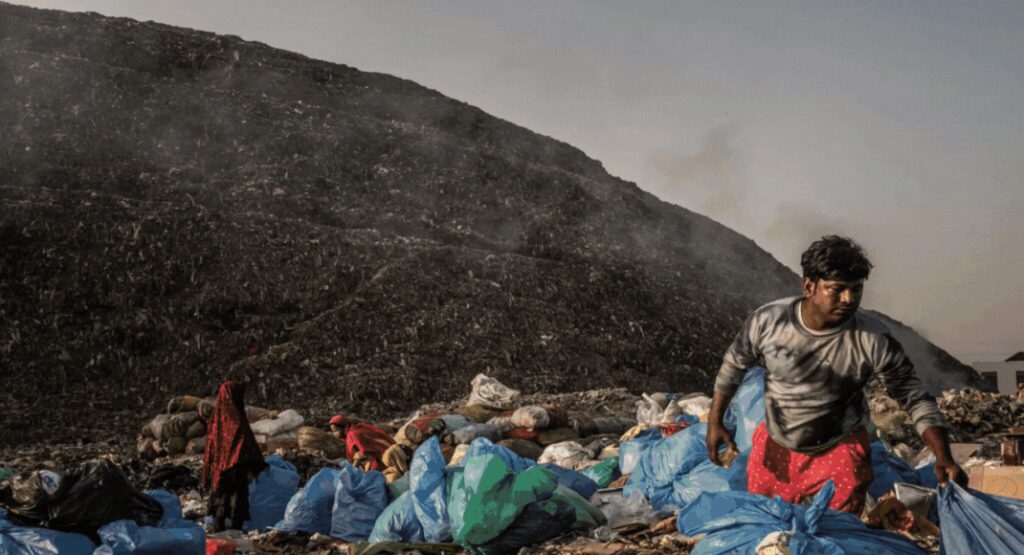
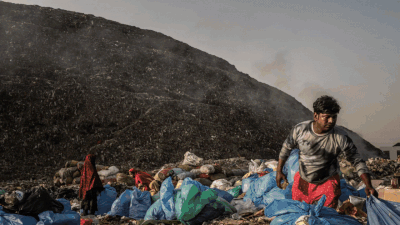
The trucks have lumbered through the capital for years, dumping loads of hot, acrid ash from thousands of tons of incinerated garbage close to playgrounds and schools.
Residents in the soot-stained homes nearby know what to expect: stinging eyes, constant migraines, hacking coughs of black spittle and shallow, labored breaths.
Burning the garbage was supposed to help solve one of Delhi’s most startling environmental crises: the giant mountains of trash that soar nearly 200 feet into the air and eclipse the capital’s skyline — putrid, 20-story slopes of waste that collapse and crush people, or catch fire in noxious blazes that last for days.
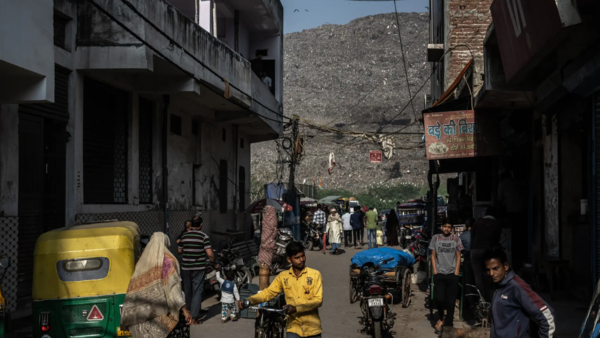
A revolutionary plan promised to incinerate the trash safely in a state-of-the-art plant, turning the waste into electricity in an ingenious bid to tackle two major problems at once.
Instead, it is exposing as many as one million people to toxic smoke and ash, according to air and soil samples collected by NYT over a five-year period.
Residents call it a mass poisoning.
Both the smoke billowing from the plant and the ashes dumped near homes have been found to be toxic, and Indian officials are well aware of the dangers.
Having surpassed China as the world’s most populous nation, India has nearly 60 cities with one million residents or more, making “waste to energy” plants like the one in Delhi a model of what the govt calls its “Green Growth” future.
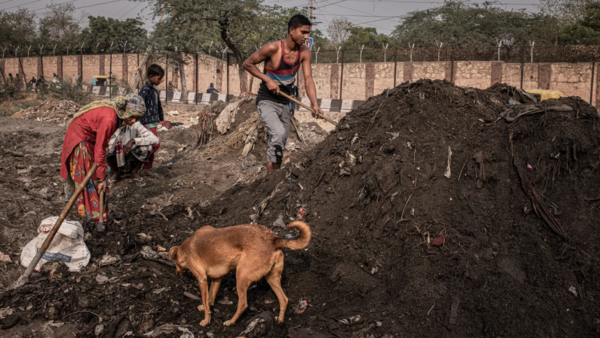
The plant even managed to get certified by the United Nations in 2011, earning the right to sell carbon credits on the global market because it uses trash, instead of fossil fuels, to generate electricity.
The problem is, many current and former workers at the plant say, there is nothing green about it.
“The plant was never regulated, and the govt knows,” Rakesh Kumar Aggarwal, a former manager at the plant, told NYT before he died in 2020, months after we started reporting this article and collecting samples for testing. He said basic safety measures were routinely skipped to save money and emissions from the facility went untreated, spewing dangerous chemicals into the heart of Delhi.
“On paper, it looks fine, it’s burning tons of trash each day,” he added. “But it’s killing people.”
Independent lab tests commissioned by NYT found that in the central Delhi neighborhood where the plant sits, the average amount of hazardous chemicals and heavy metals in the air drastically exceeded safety standards.
NYT collected about 150 air and soil samples from 2019 through 2023 around the plant, in neighborhoods where the ash was illegally dumped and in other parts of the capital. We worked with experts at the Indian Institute of Technology Delhi, one of the country’s premier universities, to test the samples, and analyzed the findings with scientists at Johns Hopkins University.
Experts called the levels of heavy metals we found alarming. In all, as many as one million people live in what scientists considered the possible contamination zones.
“I am the living example,” said Shailendra Bhadoriya, a cardiologist who moved into a leafy neighborhood in 2011. He loved its proximity to good schools and parks for his young children, and wanted to be able to walk to work at the Fortis Escorts Heart Institute, one of the largest cardiac hospitals in Asia, where he directed the intensive care unit.
He described watching the waste-to-energy plant being built about 150 yards from his home. Then, soon after it opened in 2012, Bhadoriya said, he noticed something worrisome: He and his family were constantly sick. His neighbors started to complain, too.
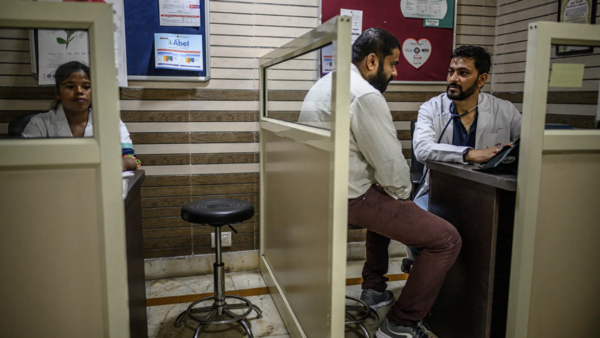
Within a year, Bhadoriya said, he and his daughter had become severely asthmatic, requiring frenzied visits to the hospital as they struggled to breathe. Outside, black soot spewing from the plant’s smokestack fell from the sky like a filthy rain, he said, coating parked cars, balconies and playgrounds.
Over the five years that NYT followed Bhadoriya, his health deteriorated significantly. He looked as if he had aged 20 years, his frame doubling over, his cheeks sinking in. His skin grew blotchy with dark spots and boils, possible signs of heavy metal and other chemical poisoning, experts consulted by NYT said. He and his daughter spent long sessions splayed out on the family couch, breathing through nebulizers, their eyes red and bulging.
“I am living a compromised life,” said Bhadoriya. He knows he should move, he added, but he feels obligated to be close to his patients.
Neeta Mishra, a gynecologist who has lived and worked in the neighborhood since 1999, said she had watched birth defects and miscarriages rise in the community since the plant opened.
“I tell any pregnant patient to get out of this neighborhood,” she said. “When patients go away, they are better. When they come back, they are worse.”
In one of the most unequal cities in the world, the problems stalk the wealthy and poor alike. The facility, named the Timarpur-Okhla Waste to Energy Plant, sits squarely in the center of the capital and burns as much as 3,000 tons of garbage a day, generating a small amount of electricity for a power-starved country.
Its smoke belches across sought-after neighborhoods that host some of the country’s most prestigious hospitals, schools and even a Ferrari dealership. And despite rules that prohibit the ash from being dumped in residential areas, open-bed trucks — often bearing the Delhi municipal corporation’s logo — have carted thousands of tons of incinerated trash to poorer neighborhoods on the capital’s outskirts for years. The wind kicks up their uncovered loads along the way.
Many of the trucks have climbed to the top of a knoll overlooking hundreds of homes, a playground and a temple. From there, the soot has come hurtling down toward the neighborhood below in black clouds, seeping into homes and settling like a gritty blanket that coats just about everything — floors, laundry, groceries, children’s toys.
“The dust is like a bedsheet,” said Rohit Mishra, 19, wiping down his desk and schoolbooks. Plumes of soot swirled in the air of his home. His mother sweeps and sweeps again — a “Groundhog Day” of dirt and grime. Still, the family is plagued by hacking coughs of black phlegm, the color of their lives since the trucks started coming.
There is so much ash that the govt has even leveled it, with a school, a clinic, a wedding hall and a park built atop the poisonous ground. Incongruously, one of the dump sites is in an “eco park.”
“They say in the future, they will plant trees there, that it will be beautiful,” Yashpal Singh, 45, said of the dump site that overlooks his neighborhood.
Kafeel Ahmen, a neighbor, was skeptical.
“We will only be able to enjoy that garden if we are alive to see it,” he said of the illnesses in his neighborhood.
When the plant opened, it promised an innovative solution to a seemingly intractable problem. Delhi’s trash mountains and landfills are so enormous that they spanned more than 150 acres last year, with waste weighing about 16 million tons — the equivalent of more than 40 Empire State Buildings. Large birds circle the peaks like a scene out of the apocalypse.
The solution brought together some of India’s most powerful players across business and politics. The govt partnered with a company controlled by the Jindal family, one of the nation’s most prominent, with operations that stretch from coal mines in Australia and South Africa to steel plants in Ohio and Texas.
The arrangement was fairly straightforward: The company that runs the plant received land and the promise of a $2 million govt grant to help build the facility. Delhi’s municipal govt supplies the plant with garbage to burn, and then the electricity gets sold back to the capital’s grid.

Turning waste into energy is not new. The technology is used in American and European cities like Miami and Paris, where it powers the Louvre. Many experts say the approach will only become more necessary as the world churns out ever more trash and landfills ravenously consume valuable land.
But current and former workers at the plant in Delhi say that some of the basic steps needed to operate safely have been skipped from the very beginning for a simple reason — to cut costs.
Without the proper controls and oversight, they and other experts say, such plants are essentially open-pit garbage fires.
Thanos Bourtsalas, the acting director of Columbia University’s Earth Engineering Center, said he toured the Okhla plant in 2017 and quickly grew alarmed at how many of the basic precautions needed to reduce pollution were being ignored.
“I was very concerned by what I saw,” said Bourtsalas, rattling off a litany of substances and steps needed to prevent toxic emissions that the plant had skipped.
“When I asked why they weren’t using those materials, they said they do sometimes, maybe once every two weeks to save money,” he said. “These materials need to be continuously injected. They are the main systems to control air pollution.”
Despite Bourtsalas’ concerns, the plant’s website portrayed him as a fervent champion. A photograph of him still appears on it, right next to a quote in which Bourtsalas supposedly calls the plant a “Great Step towards Sustainability” — an accolade he denies ever giving.
Bourtsalas said he was shocked to learn that he was on the website — and that his warnings were being portrayed as an endorsement.
“I warned them that what they were doing was dangerous,” he said. “Repeatedly.”
Officially, the govt was also regulating the plant to make sure it operated safely. But former workers said they regularly got tipped off when inspectors were coming, so that they could spin up the necessary safety measures before regulators arrived and make it look as though the plant always functioned by the book.
“We would get a notification from the pollution boards that they were coming and start using” the necessary measures to mitigate emissions, said Aggarwal, the former plant manager.
“But we never used it normally,” he added, declining to say whether regulators had been bribed.
The deception came down to basic economics, managers said: The plant was not as profitable as expected.
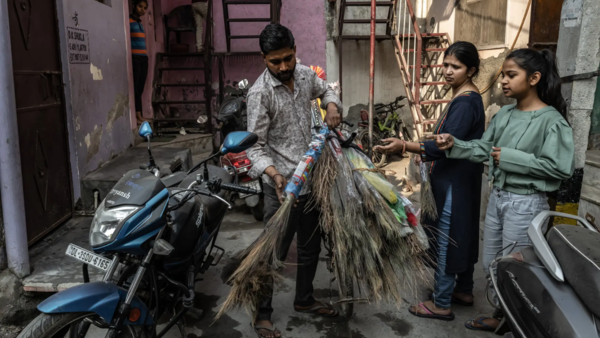
When a Jindal-controlled subsidiary got the contract in 2008, it seemed poised to cash in on an expansive international carbon credit market managed by the UN. The arrangement enabled countries and companies that wanted to offset their own carbon emissions to buy credits from other projects that produced renewable energy.
According to an internal assessment obtained by NYT, the plant could expect to make $2 million off the carbon market when it opened in 2012.
But right before the plant came online, the market crashed.
In 2011, the carbon credit market peaked at $176 billion. When the plant opened the next year, the market had lost nearly two-thirds of its value.
Suddenly, the plant’s whole economic model had been upended.
“When the Okhla project was being developed, the carbon market was booming at that time; it was one of the revenue drivers for the project,” said Neelesh Gupta, a former manager at the subsidiary that operates the plant. He resigned in 2021.
The market’s collapse “made the project unviable,” he said.
So, the plant operators started cutting corners to save money, according to Bourtsalas, Aggarwal and two former senior employees. Managers stopped buying enough of the emission-cleaning materials needed to operate safely, they said.
Other vital precautions have been flouted as well, NYT found.
For one, the “consent to operate” — terms that govern the plant’s operations — makes it clear that the trash is supposed to be sorted first. That prevents potential hazards, like batteries, harmful plastics and electronic waste, from being burned and emitting heavy metals into the air.
But as we followed the trucks from the plant to the dump sites and collected samples, we saw parts of batteries, pipes, wires, a melted cellphone and other obvious pieces of metal and electronics, suggesting that the plant was not sorting its trash properly before burning it.
Beyond that, many of the ashes from incinerated trash are considered so toxic that most European waste-to-energy plants mix them with cement before transporting them, so they don’t escape. They are then dumped in scientifically-engineered landfills or giant cement vats designed to prevent them from getting into the soil and leaching into groundwater.
We watched Delhi municipal trucks drop truckload after truckload of loose ash right near homes, schools, a temple and a clinic, ignoring the rules that govern the plant and violating explicit orders by the nation’s top environmental regulators to stop dumping toxic ash near residents.
In one neighborhood, Tajpur Pahari, apartment buildings surround a wide quarry about 60 feet deep, right next to the so-called eco park where residents gather to exercise, play and worship. Trucks from the plant poured ashes into the quarry for years, finally stopping in 2023 after they had filled up the cavernous pit.
We took more than 70 soil samples from Tajpur Pahari in 2022 and 2023. The results showed that levels of cadmium — a dangerous heavy metal often found in batteries — were eight times higher than the EPA’s hazard limit, on average. We also found dangerous concentrations of lead in the soil.
There was so much metal that impoverished families, known locally as ragpickers, sorted through the ash to salvage whatever they could, retching on the fumes as they worked. Covered in soot, they clutched dirty scarves to their noses as the trucks dumped steaming loads around them. They stepped back and let the ash cool before sifting through it with crudely made magnets, fishing out metal scraps to sell.
“This is not the place to dump; there is groundwater,” said Tejdeep Singh, who retired in 2022 from India’s Ministry of Water as a senior scientist after 34 years.
As the neighborhood woke up each day, residents crossed the small road to the dumpsite, power-walking around the park for their morning exercise. Commuters trudged through ash piles to get to work. By the afternoon, excited children streamed out of the schools to play cricket in the park.
Ominder Singh, who helped manage the Tajpur Pahari dump site for several years, said he always approached the fresh ash piles with caution, the acrid fumes giving him a gnawing headache that didn’t go away. But he needed the job, he said.
“Look at this place,” he said, motioning toward the ragpickers. “Now you know what poverty means.”
In another Delhi suburb where the ash has been dumped — called Khadda Colony, where Mishra, the student, lives with his family — our test results were similar. The soot from the trucks had spread so far and wide throughout the area that we took one sample off the hood of a parked car that had been completely covered in ash. It contained cadmium levels nearly four times the EPA threshold.
Amit Kumar, a spokesman for Delhi’s municipality, denied that any ash was ever dumped in residential areas, claiming it went to landfills instead.
But we followed dozens of dump trucks from the Okhla plant over a period of three years. We watched them wend through the capital and drop loads in residential neighborhoods, only a few dozen feet from homes.
Despite repeated requests for comment over several years, the nation’s Ministry of Environment and the main environmental regulatory agency declined to comment. Jindal-controlled companies that own and oversee the plant, both directly and indirectly, declined to comment as well.
In March of this year, the govt opened Delhi’s first scientifically engineered dump, enabling the capital to manage the ash in a safer way. But residents say the toxic ash from previous dumping still coats nearly every facet of their lives, and in July they received a new shock: The govt allowed the plant to ramp up its operations significantly, giving it the right to burn about 1,000 more tons of trash a day.
“More people could become sick,” said Keeve Nachman, one of the Johns Hopkins scientists who helped analyze test results. “Based on reports of various illnesses in the community, these health effects should be taken seriously.”
The kinds of hazards that have been found in the plant’s emissions can be long lasting. Dioxins continue to contaminate Vietnam’s soil and rivers decades after the war there, with severe health consequences like birth defects.
Desperate residents sued to stop the plant in India’s Supreme Court, but the case has been delayed for years. They also wrote the UN to protest the carbon credits the plant was receiving, listing the ways in which the plant was skirting regulations. They say the UN ignored them.
A UN spokesperson said it was the responsibility of the govt, not the UN, to ensure the plant was meeting environmental regulations.
Experts said the UN simply did not have the bandwidth to monitor the many companies whose supposedly green emissions made up the carbon credit market. Buyers eventually discovered that many projects, including in India, were not actually environmentally friendly, contributing to the market’s collapse.
Indian regulators also said they had their hands full. The Central Pollution Control Board, the nation’s top environmental regulator, employs a staff of around 400 to monitor a country of about 1.4 billion, compared with the EPA in the US, which employs nearly 17,000 for a nation with roughly a quarter as many people.
“A lot of things should be done,” said Deepak Kumar Singh, a director at the Delhi Pollution Control Committee, the main environmental regulator for the capital and its surroundings. “The frequency of monitoring should be more, inspections of the plant should be more.”
But, he said, the city’s problems stretched far beyond the Okhla plant. Delhi is the world’s most polluted capital, with only a handful of days each year considered in the “healthy” range by air quality experts.
“You have to understand,” Singh pleaded. “We have three scientists monitoring air and water pollution for all of Delhi’s industries,” making it all but impossible to adequately regulate one of the biggest, busiest cities in the world.
Judges and regulators have occasionally thrown obstacles in front of the Okhla plant over its environmental breaches, but not for long.
A 2015 ruling by the National Green Tribunal, India’s top environmental court, found that the data released by the Okhla plant “seems to not be representative of actual emissions.”
Two years after that, the tribunal ruled against the plant again for continuing to violate regulations, but allowed it to keep running.
Also in 2017, India’s Environment Ministry hired experts from the German government’s development agency, known as GIZ, to evaluate the plant.
In an internal report obtained by NYT, the German experts found that the plant was emitting toxic substances and not monitoring emissions properly, echoing the tribunal’s ruling.
“The plant violated the permitted emission limit values during consideration most of the time,” the report said.
Boils and cuts speckle the hands of Varna Sri Raman, possible signs of dioxin poisoning, according to experts consulted by NYT. An economist and writer of children’s books, Sri Raman said she can barely type on her computer to work on research papers or the children’s tales she loves writing.
Sri Raman and her husband had purchased their home in the neighborhood of Sukhdev Vihar, thinking that the bird sanctuary next door would provide some relief from Delhi’s infamous smog.
“But now we have this toxic monster that is breathing this stuff out, choking us everyday,” Sri Raman said. Her garden rooftop overlooks the plant, about 100 yards away.
Her 11-year-old son has had severe, persistent bronchitis ever since he was 2, when they moved to the neighborhood, she said.
“If you speak to my son, he’ll say he has had a bad cold since 2018,” she said, adding that nebulizers have become a crutch in their household, as they have for many neighbors.
The trash kept getting burned, even as violations piled up. In March 2020, regulators found the Okhla plant was releasing three times the permissible limits of dioxins and furans, another toxic substance.
Then in September 2020, regulators found that the problem had gotten worse: The plant was emitting 10 times the permissible limit of dioxins and furans.
Even so, the govt has promised some $12.5 million in grants to build a second plant in the capital.
The economic landscape for these waste-to-energy plants has also changed. A Jindal-controlled subsidiary sold more than $400,000 of carbon credits in 2022 from its waste-to-energy plants, according to the company’s financial statements, and it may cash in on more in the years to come.
Despite the carbon market’s collapse a decade ago, it is now booming once more, rising to $949 billion in 2023, up from $277 billion in 2020.
This Sept, the US govt issued its first-ever federal guidelines for investing in carbon credits, which is expected to boost the market. China opened up a carbon credit market earlier this year, and India is seeking to create its own.
“Money is flowing through these markets, but it’s very difficult to measure how much of it really ends up financing climate action, or to make sure the green projects are really green,” said Gilles Dufrasne, a policy expert on global carbon markets at Carbon Market Watch, a watchdog.
Sri Raman believes the Okhla plant is slowly killing her family, but she feels trapped. The family invested its life savings in the house and would have to sell at a huge loss. The neighborhood is now infamous for two things: the Okhla plant and the sick people around it.
Last year, an explosion shook one of the plant’s boilers and ash rained down on her neighborhood for 24 hours, she and other residents said.
The neighborhood is mixed, Muslim and Hindu, making it harder to join together to stop the pollution, Sri Raman and other residents say.
“The state that this country is in right now, it’s impossible to get Hindus to join with Muslims to fight,” Sri Raman said. “But Jindal’s pollution doesn’t affect me any different than a Muslim mother.”
“We both need to protect our families, to live,” she said.
Suhasini Raj contributed reporting from Delhi.






